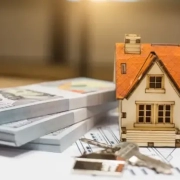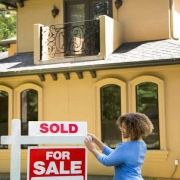Future of 1031 Exchanges: Trends and Predictions
The landscape of real estate investment is continually evolving, shaped by economic shifts, regulatory changes, and market trends. Within this dynamic environment, 1031 exchanges have long been a staple strategy for investors seeking to defer capital gains taxes and optimize their portfolios. However, as the real estate market adapts to new realities and investors face evolving challenges, the future of 1031 exchanges is subject to speculation and anticipation. In this comprehensive analysis, we’ll explore the emerging trends and predictions shaping the future of 1031 exchanges.
A 1031 exchange, named after Section 1031 of the Internal Revenue Code, allows real estate investors to defer capital gains taxes on the sale of investment properties by reinvesting the proceeds into like-kind properties. This provision has been a fundamental tool for investors, providing opportunities for portfolio growth, tax savings, and wealth accumulation. As we look ahead, several key trends and predictions are likely to influence the future of 1031 exchanges.
Market Dynamics and Demand
One of the primary factors driving the future of 1031 exchanges is the broader real estate market dynamics and investor demand. Despite occasional fluctuations, real estate has historically been a resilient and lucrative investment asset class. As investors seek to capitalize on market opportunities and diversify their portfolios, the demand for 1031 exchanges is expected to remain strong. Additionally, demographic trends, such as the aging population and increasing urbanization, may drive demand for specific types of properties eligible for 1031 exchanges, such as multifamily housing and commercial real estate.
Regulatory Landscape
Changes in tax policy and regulatory frameworks can significantly impact the viability and attractiveness of 1031 exchanges. While the provision has enjoyed longstanding support, it has also been the subject of debate and scrutiny. Policymakers may consider revisions to tax laws that could affect 1031 exchanges, either by imposing restrictions, altering eligibility criteria, or adjusting tax rates. Monitoring legislative developments and staying informed about potential regulatory changes will be crucial for investors navigating the future of 1031 exchanges.
Technological Innovation
Advancements in technology have the potential to streamline and enhance the 1031 exchange process, making it more accessible and efficient for investors. Digital platforms and online marketplaces may emerge to facilitate property identification, due diligence, and transaction management, reducing administrative burdens and transaction costs associated with 1031 exchanges. Additionally, blockchain technology could offer solutions for securely recording property ownership and transactions, further enhancing transparency and trust in the exchange process.
Economic Factors related to The Future of 1031 Exchanges
The future of 1031 exchanges is also influenced by broader economic factors, such as interest rates, inflation, and market volatility. Low-interest-rate environments may incentivize investors to leverage 1031 exchanges to acquire higher-yielding properties and hedge against inflation. Conversely, economic downturns or market disruptions may prompt investors to prioritize capital preservation and liquidity over tax deferral, leading to shifts in 1031 exchange activity. Monitoring economic indicators and adapting investment strategies accordingly will be essential for investors navigating changing market conditions.
Environmental and Social Considerations
Increasing awareness of environmental sustainability and social responsibility is shaping investor preferences and influencing real estate investment decisions. ESG (Environmental, Social, and Governance) criteria are becoming increasingly important factors in property selection and due diligence processes. Investors may seek to align their investment strategies with ESG principles, favoring properties with strong sustainability credentials and positive social impact. As these considerations gain prominence, they may influence the types of properties eligible for 1031 exchanges and drive demand for environmentally friendly and socially responsible investments.
In conclusion, the future of 1031 exchanges is subject to various trends and predictions influenced by market dynamics, regulatory changes, technological innovation, economic factors, and environmental and social considerations. While the provision has proven to be a valuable tool for real estate investors, its evolution will depend on how these factors intersect and shape the investment landscape. By staying informed, adaptive, and proactive, investors can position themselves to capitalize on opportunities and navigate challenges in the ever-changing world of real estate investment and 1031 exchanges.
If you have further questions related to the Future of 1031 Exchanges, feel free to contact us here.












Leave a Reply
Want to join the discussion?Feel free to contribute!